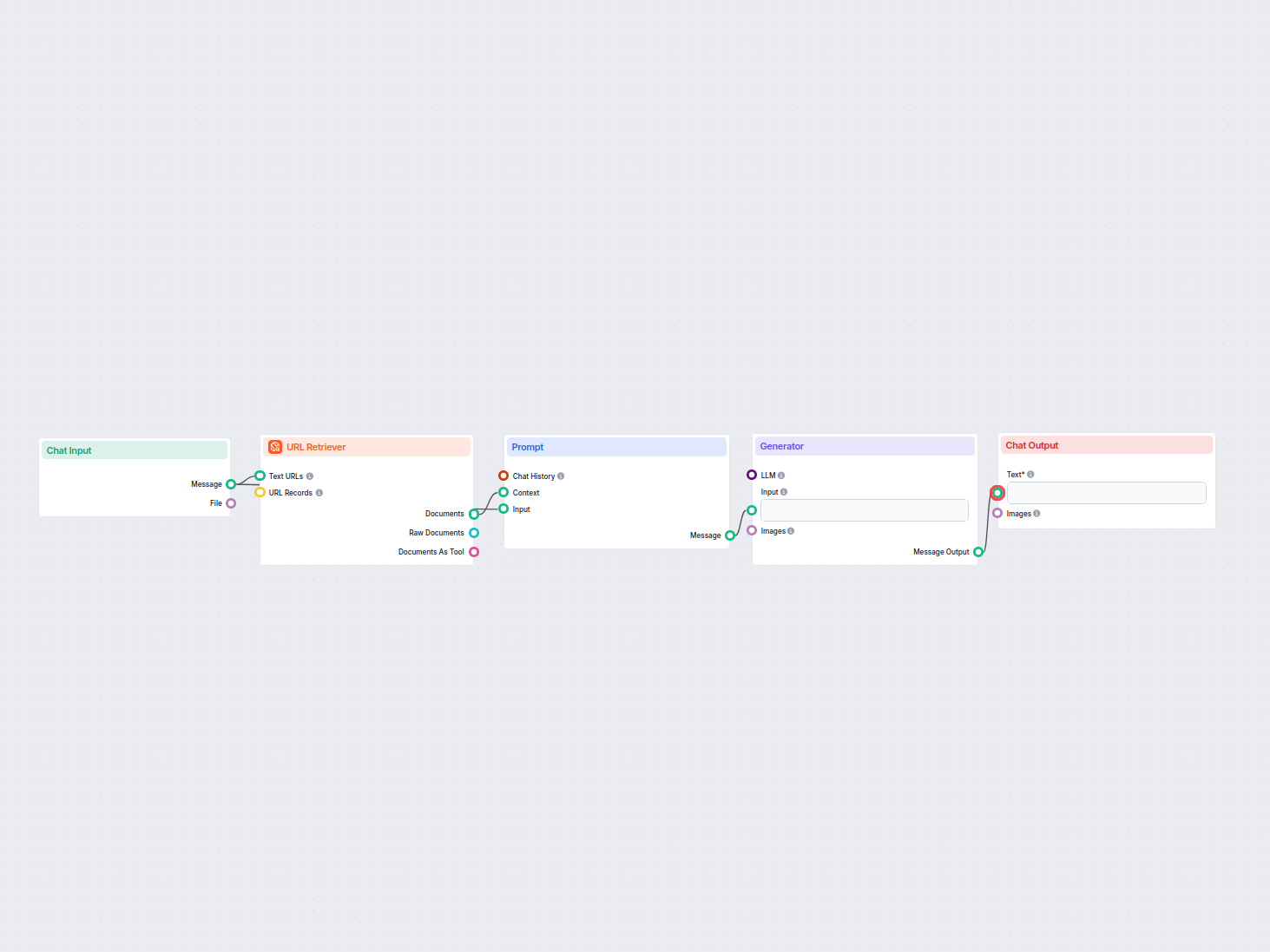Flow description
Purpose and benefits
Overview
This workflow, titled “Schema.org Generator”, is designed to automate the process of creating Schema.org structured data in JSON format for any given website URL. Schema.org markup helps search engines better understand your website’s content, which can improve SEO and how your pages are displayed in search results.
The workflow is currently set up to generate the following schema attributes: about, sameAs, mentions, listItem, and ItemList. However, you can easily customize which schema elements are generated by modifying the prompt.
Step-by-Step Flow
1. User Interaction and Welcome Message
- When a user opens the chat interface, a welcome message is displayed.
- The message explains the tool’s purpose and instructs the user to provide a URL.
- The user enters (or pastes) the URL of a webpage for which they want to generate Schema.org structured data.
3. Retrieving Website Content
- The workflow fetches the content of the provided URL using a URL Retriever component.
- This component extracts the main text or document content of the page to be analyzed further.
4. Building the Prompt
- The workflow uses a Prompt Template component, which:
- Receives the website content (as “context”).
- Receives the original user input (the URL).
- Fills a predefined prompt instructing an AI model to generate Schema.org JSON based on the content.
- The prompt specifically guides the model to:
- Use
"about" to describe the article’s main topic. - Use
"sameAs" for the most authoritative related website. - Use
"mentions" for other related entities or keywords. - For list articles, create
"ItemList" and "listItem" entries.
5. AI-Powered Generation
- The constructed prompt is fed into a Generator component, which uses a language model (LLM) to produce the requested Schema.org JSON.
6. Output Display
- The generated Schema.org JSON is displayed to the user in the chat interface.
Workflow Structure
| Step | Component | Purpose |
|---|
| 1 | Chat Opened Trigger & Message Widget | Greets the user and explains workflow usage |
| 2 | Chat Input | Receives the URL from the user |
| 3 | URL Retriever | Fetches and parses content from the provided URL |
| 4 | Prompt Template | Assembles the AI prompt with context and instructions |
| 5 | Generator | Uses LLM to generate Schema.org JSON from the prompt |
| 6 | Chat Output | Displays generated Schema.org JSON to the user |
Key Features & Benefits
- Automation: Eliminates manual creation of Schema.org markup for each webpage, saving time and reducing errors.
- Scalability: Can be used repeatedly for any number of URLs, supporting bulk or batch processing.
- Customization: Easily adaptable to generate different Schema.org attributes by editing the prompt.
- SEO Enhancement: Improves visibility and clarity for search engines, potentially boosting search rankings and rich results.
- User-Friendly: Simple chat-based interface lowers the barrier for non-technical users.
Use Cases
- Website owners and SEOs who want to quickly generate structured data for their articles, product pages, or listicles.
- Agencies managing multiple client websites needing standardized, consistent schema markup.
- Developers integrating Schema.org automation into their content pipelines or CMS workflows.
Example User Flow
- Visit the tool: User opens the chat and is greeted with instructions.
- Enter URL: User inputs the URL of the target webpage.
- Receive Schema.org JSON: The tool returns a ready-to-use JSON snippet tailored to the page content, which can be added to the website.
By automating Schema.org JSON generation, this workflow helps you scale your structured data implementation, ensuring your content is easily understood by search engines and enhancing your site’s presence in search results.


